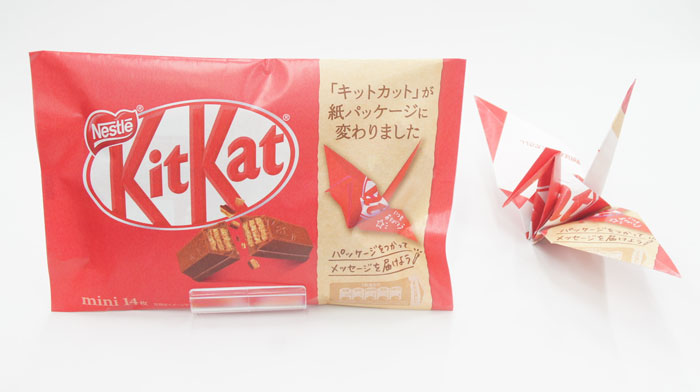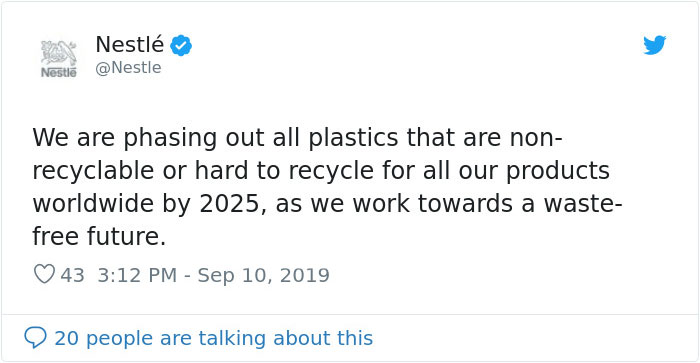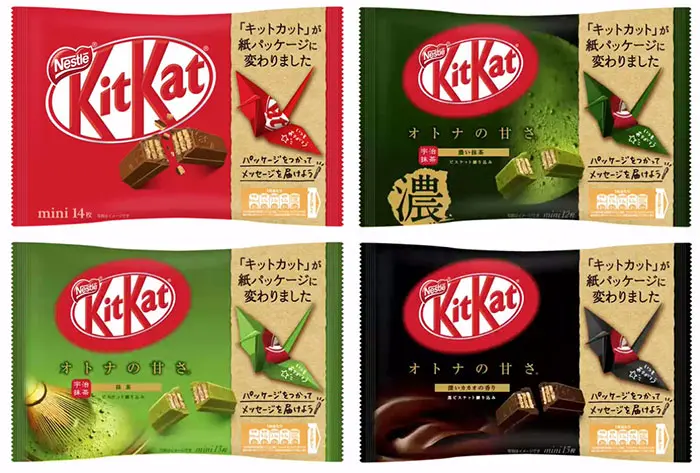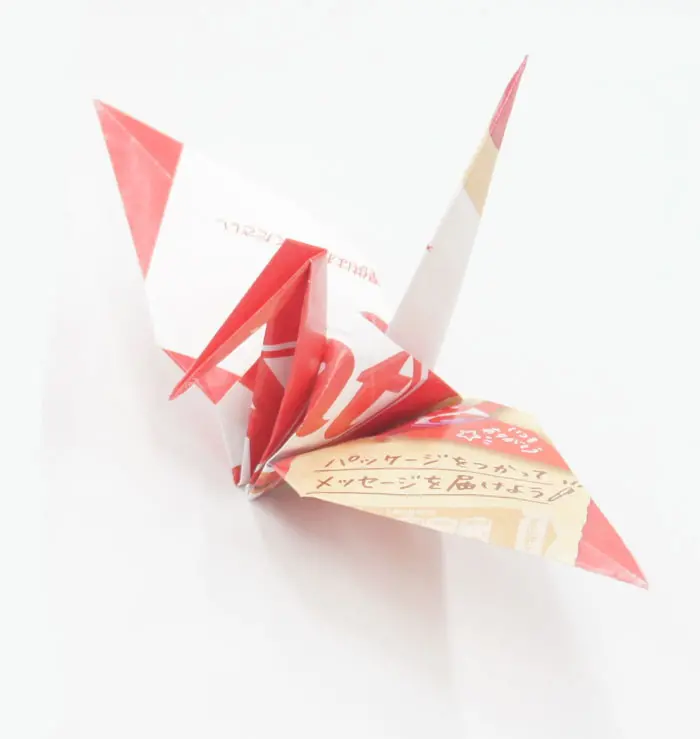Nestlé sweet treats are now loved more because of the new Kitkat paper packaging; the largest food company has recently made an environment-friendly move eco-warriors have been applauding about: switching plastic with paper packaging that can be used creatively instead of thrown immediately.
In Japan, Nestlé’s Kitkat comes in many interesting flavors. Among the bestsellers are the green tea or matcha, strawberry, and dark chocolate. Sake, plum wine, you name it, Japan has a wide range of flavors for all kinds of people. Glossy plastic wrappers on Kitkat no more as Nestlé Japan replaces this with paper packaging. Kitkat lovers can now enjoy not just protecting the environment but also Japan’s lovely culture as they get to use paper in making kawaii paper crane designs.
Kitkat Paper Packaging

On September 10, 2019, Nestlé’s tweet caused positive buzz among the environmental groups:
“We are phasing out all plastics that are non-recyclable or hard to recycle for all our products worldwide by 2025, as we work towards a waste-free future.”
Their official statement can be found on their website.
Nestlé’s Tweet

This Kitkat paper packaging initiative from Nestlé, one of the biggest contributors of plastic waste, is commended by non-profit environmental organizations such as Greenpeace that runs #PlasticMonster, a campaign that aims to reduce the production and utilization of single-use plastics of establishments and individuals.
“Nestlé has created a monster by producing endless quantities of throwaway plastics that persist in our environment for lifetimes,”
said Kate Melges, one of Greenpeace’s anti-plastic campaigners.
She added that, on a global scale, more than 90 percent of plastic produced are not yet recycled, and the big companies are the biggest monsters that churns out the most number of plastics.
“People living along rivers and coastlines in Southeast Asia and in other communities around the world are among the most impacted by plastic pollution. Even though excessive production of single-use plastic for packaging is the real cause, these communities are often blamed for this crisis,”
Melges said.
Kitkat Sustainable Paper Packaging

Swapping plastic wrappers with paper ones is one of the initiatives of Nestlé as it stays true to its ambition to “make one-hundred percent of its packaging recyclable or reusable by 2025.” The company is also set with its mission to save 418 tons of plastic each year. The paper package design, moreover, encourages buyers to write personal messages on it and send it to family, friends, and loved ones. Travelers who buy Kitkat for people back home can definitely use origami cranes out of Kitkat paper packaging as a way of wishing them good luck in life as well; writing “kitto katsu” (which means “will surely win”) is part of Japanese culture.
However, Nestlé’s move is still subjected to scrutiny. Other individuals of position from Greenpeace think that it has to make sure that Kitkat’s paper packaging goal should stay sustainable and that it must go much further if it wants to be considered an environmentally responsible company. Environmental groups have been voicing out through the years as to how big companies practice greenwashing or masking a certain product, service, or operation as eco-friendly when it’s the other way around.

Greenpeace Switzerland global campaigner for fast-moving consumer good or FMCG Matthias Wüthrich argued:
“It’s good that Nestlé is finally rethinking the way the company delivers its products but substituting single-use plastic for another throwaway material is not the way to go. These kinds of false solutions, which are not environmentally friendly, are what put us in this mess in the first place.”
He considers Nestlé’s implemented paper packaging as a quick fix and hopes that the company will decide to
“reduce its plastic packaging and implement reusable systems rather than grasping at a quick fix that could cause further environmental disasters such as deforestation.”
Kitkat Paper Packaging Folded Into Origami

To ensure freshness of the product, Nestlé partnered with an anonymous supplier that offers advanced paper-packaging technology in which a water-based coating is added to Kitkat’s paper packaging.

